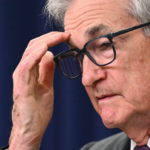Bank of America (BAC) kicked off the year with a strong first-quarter performance, reporting a solid rise in profits and revenue fueled by record-breaking trading activity. The surge was largely driven by market volatility sparked by the rollout of tariffs under President Trump in February and March.
CEO Brian Moynihan highlighted the bank’s momentum, noting, “Our business clients have been performing well, and consumers have shown resilience.” However, he also cautioned that “we potentially face a changing economy,” pointing to the lingering uncertainty surrounding future tariff policies.
The bank’s total sales and trading revenue rose 9% year-over-year to $5.66 billion, marking its highest quarterly figure in over a decade. Equities trading brought in a record $2.2 billion—up 17% from the same quarter last year.
Bank of America wasn’t alone in riding the wave of market volatility. Rivals JPMorgan Chase (JPM), Goldman Sachs (GS), and Morgan Stanley (MS) also saw trading revenues climb during the same period.
However, investment banking didn’t fare as well. With companies showing caution amid ongoing trade tensions, BofA’s investment banking fees slipped 3% year-over-year to $1.52 billion. This mirrored trends seen across other major Wall Street firms.
Bank of America’s total profits reached $7.4 billion—an 11% increase from a year earlier and above Wall Street expectations. The bank’s stock rose in pre-market trading following the announcement.
Its net interest income, a key measure of lending revenue, came in at $14.6 billion—well within the bank’s forecast range. Full-year guidance remains unchanged, with expectations to earn between $15.5 billion and $15.7 billion in the final quarter.
Still, there were hints of caution in the outlook. The bank set aside $1.48 billion for potential credit losses—over 12% more than it had a year ago—signaling concerns about future credit conditions.
CFO Alastair Borthwick addressed the broader economic outlook, stating, “Our research team at this point doesn’t believe we’ll see a recession, and our clients continue to show encouraging signs.” He added that while some slowdown is expected due to ongoing uncertainty, growth is still projected—echoing views shared by the Federal Reserve and its chairman, Jerome Powell.
Powell has previously warned that Trump’s tariff policies could lead to slower growth and rising inflation.









